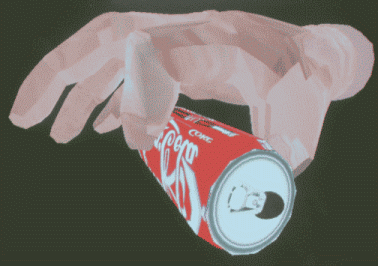
Dr Mark Symmons
Haptics research
Haptics is essentially the complete sense of touch - not just what you feel with your hands, but sensing your body position and movement in space (kinesthesis), detecting vibration, and so on. With the advent of touch interfaces for phones, tablets and so on, international interest in haptics has boomed. But the technology is moving in advance of the basic understanding of how this fundamental sense functions. Mark's masters and PhD theses were both in the haptics field.

Active vs passive touch
In active touch we control our own exploration, deciding when, where and how to explore the world around us. In passive touch we surrender that control to some outside agency. Others had made comparisons between these modes, but that research was generally flawed. Mark had a unique device built - the TDS - to compare active and passive touch with more rigour and control than ever before. He was also the first to make a controlled comparison for three-dimensioal space.

Cross- & intra-modal psychophysics
The high level of control afforded by the TDS allowed highly accurate comparisons between exploring with touch alone, with vision alone, and with both together.
The TDS also presented a unique situation in which the different elements that make up the haptic sense could be isolated and compared, such as kinesthesis versus pressure.

Haptics & virtual reality
Mark was also involved in developing an exoskeleton on a shoestring that combined with a computer display. The user could see a virtual image of their hand holding a soft drink can and could feel the hardness and coldness of the aluminium even though they weren't actually holding the can. The illusion was quite compelling as is relevant to burgeoning fields such as telesurgery.

Remote touch
There are a host of advantages to being able to operate devices and equipment at a distance. Commercial equipment now exists for performing surgery in this manner - telesurgery. Mark was part of a team working for Rio Tinto to improve remote control of mining machinery such as rockbreakers.

Other sensory research
Mark is involved in a range of additional sensation & perception / psychophysics projects, including:
-
One Mark's PhD students is comparing the horizontal-vertical illusion across the visual, aural and haptic senses
-
One of Mark's PhD students is exploring sensory aspects of out of body experiences
-
Mark has collaborated on a number of projects with Dr George Van Doorn, the most recent of which was a study to explore whether one could tickle onself by way of the rubber hand illusion
A range of older projects are evident in Mark's publications list.